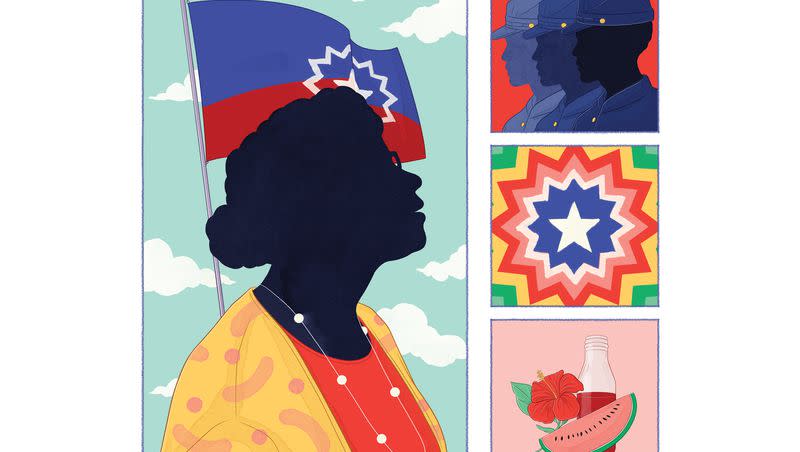The long emancipation

Juneteenth, the newest federal holiday, reminds us of the work it takes to forge a reality that matches our ideals. Abraham Lincoln may have legally ended slavery, but the practice outlived him, continuing even after the Civil War. Black Americans have long commemorated Juneteenth — named for June 19, 1865, the day Union soldiers finally brought word of their liberation to slaves held in Galveston, Texas. Now, it’s a day for all to celebrate how far we’ve come as a nation, but also to remember the cost and recommit to our ideals of freedom.
Here are some facts to help better understand this holiday.
What is Juneteenth and why is it a holiday?
On June 19, 1865, Maj. Gen. Gordon Granger rode into Galveston, Texas, at the head of about 2,000 Union soldiers. There, he delivered General Order No. 3, which declared that “all slaves are free” — effectively liberating roughly 250,000 people in that area — and advised them to stay at their posts and work for wages. Across the former Confederacy, masters often waited until a government agent arrived, or after the harvest, to tell those they had enslaved that they were freed.
Black soldiers fought in the Civil War
Nearly 40,000 Black soldiers died in the Civil War, fighting to free their people after the 1863 Emancipation Proclamation made newly freed Black men eligible to serve in the military. About 198,000 took up arms in segregated units, notably marching with Maj. Gen. William T. Sherman in his famous march across Georgia and South Carolina to the Atlantic Coast, wresting Atlanta and Savannah from Confederate control.
Samuel Cabble’s letter to his wife
“Dear Wife, … I would like to know if you are still in slavery. If you are, you will not be long before we have crushed the system that now oppresses you. … Great is the outpouring of the colored people that are now rallying with the hearts of lions against the very curse that has separated you and me. ... I am a soldier now and I shall use my utmost endeavor to strike at the rebellion and the heart of this system that has so long kept us in chains.” – Former slave Samuel Cabble
When was emancipation first celebrated?
An early emancipation celebration was held in Galveston on January 1, 1866. A Galveston newspaper reported that hundreds of men, women and children gathered in the “colored church.” Among the speakers was Brig. Gen. Edgar Mantlebert Gregory. The Emancipation Proclamation was read from the pulpit and the congregation sang hymns like “John Brown’s body.” The first Juneteenth happened that summer, and soon came to embody the spirit of liberation, with “monstrous and brilliant” parades through the Texas city.
How did Black soldiers celebrate Juneteenth during World War II?
During World War II, Black soldiers found comfort in celebrating Juneteenth even as they served in racially segregated units. One group of veterans, civilians and soldiers from Fort Bliss gathered at a community center in El Paso, Texas, in the summer of 1943. They played baseball, hosted a marathon and shared food at a picnic, probably including barbecue and red velvet cake. But at the other end of the state, celebrations were canceled as about 10,000 men at a Ku Klux Klan convention rioted in Beaumont.
When was Juneteenth Solidarity Day?
Coretta Scott King highlighted a different kind of festivities in 1968. On “Juneteenth Solidarity Day,” more than 50,000 people gathered at Lincoln Memorial, Washington, D.C., to carry on the late Rev. Martin Luther King Jr.’s “Poor People’s Campaign” for economic freedom. Mrs. King joined other luminaries from the civil rights movement, like Ralph Abernathy and Rosa Parks. Eartha Kitt entertained the crowd, singing in Spanish.
Why is Opal Lee the grandmother of Juneteenth?
The “Grandmother of Juneteenth,” longtime activist Opal Lee, walked 1,400 miles from her home in Fort Worth, Texas, to Washington, D.C., at age 89. This was the culmination of years of shorter walks, 2.5 miles for the 2.5 years it took slaves in Texas to learn they were free. As a child, she’d seen a mob of 500 burn down her family’s home on June 19. Now she was determined to make it a federal holiday. By 2021, when the holiday came up for a vote, she had gathered more than 1.5 million signatures of support.
When did Juneteenth become an official holiday?
Juneteenth passed unanimously in the Senate, and 415-14 in the House, in 2021. A year after Black Lives Matter protests spilled through the nation’s streets, drawing attention to yet another division in society, signing the bill was an easy call for President Joe Biden to enact this new holiday for all Americans. Opal Lee received a standing ovation during the signing, but Juneteenth also had the passionate backing of Rep. Sheila Jackson Lee, of Texas, and thousands of activists.
How is Juneteenth celebrated?
Hibiscus tea and watermelon are staples at Juneteenth celebrations. Marching bands and dancers perform in parades. Festivals showcase Black culture like hip-hop music, soul food and African cuisine. Many walk the streets in hopeful demonstrations or sing Juneteenth classics like “Many Thousands Gone” and “Go Down Moses.” The celebrations are often tinted in red, black and green, the colors of the Pan-African flag, representing the blood, soil and prosperity of Black people.
What did Michelle Obama say about Juneteenth?
“What I love about Juneteenth is that even in that extended wait, we still find something to celebrate. Even though the story has never been tidy, and Black folks have had to march and fight for every inch of our freedom, our story is nonetheless one of progress.” — former first lady Michelle Obama
This story appears in the June issue of Deseret Magazine. Learn more about how to subscribe.

